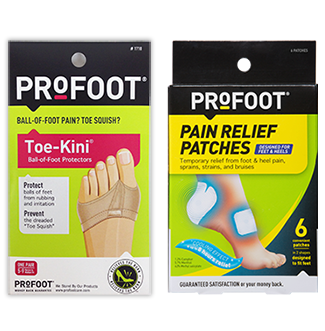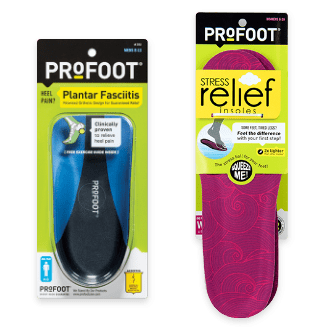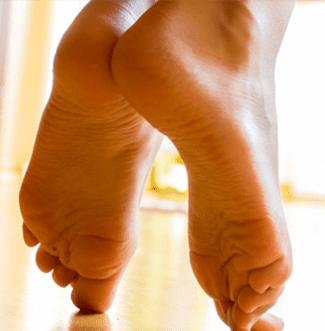Metatarsalgia
What Is Metatarsalgia or Ball of Foot Pain?
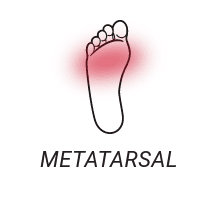
Ball of Foot Pain Region
Metatarsalgia (met-a-tar-sal-jee-a) is a condition that causes pain in the forefoot—or ball of foot—the area between your arch and toes. The five metatarsal bones transect the midsection of your foot, connecting your ankle bone to your toes. Also known as ball of foot pain or a stone bruise, the area under your toes can be a common source of pain because it supports your weight when standing, walking, or running.
Symptoms Ball of Foot Pain
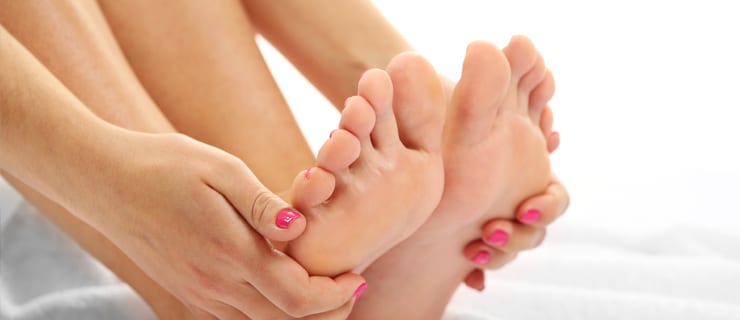
Photo: Person with pain in the ball of the foo
Metatarsalgia is characterized by a painful inflammation that flares up in the ball-of-foot area between your toes and arch. The pain can manifest as a tingling or numbness, a sharp shooting or burning pain, or as if you’re walking with a small pebble in your shoe (that’s where the name “stone bruise” comes from). You may feel pain in a small area under your toes, or it could radiate across the whole width of the foot.
Pain can increase just from simply flexing your feet, standing on your feet for long periods of time, or walking—especially if you walk barefoot on hardwood floors or cement pavement. High-impact exercise that include running or jumping can also make the pain worse. Pain may decrease when you rest or soak your feet.
Causes Causes of Metatarsalgia
Increased pressure on the ball of the foot can result in metatarsalgia. Some common causes of this ball of foot pressure are poor-fitting shoes including:

Photo: Person wearing high heels with pain in the ball of the foot
High-heels over two inches and pointy-toed shoes that force the toes and ball of the foot into a restricted amount of space.
Athletic shoes that are too loose or too tight: loose shoes cause the foot to slide and rub, which increases friction, while tight shoes squeeze the foot and increase pressure. Flats
ballet flats or flip-flops with very little shock absorbing padding or arch support.
Additional causes:
- High-impact sports such as running or tennis put extra pressure on the balls of your feet, especially if you’re wearing the wrong shoe for the sport.
- A recent weight gain or being significantly overweight can increase forefoot pressure. Metatarsalgia is also more common in older people, especially older women, and people with diabetes.
- Narrow feet, flat feet, or high arches can increase the incidence of metatarsalgia.
- Bone and joint conditions such as arthritis, gout, bunions, bursitis, Morton’s neuroma, hammer toes, and stress fractures can cause or aggravate metatarsalgia.
Morton’s Neuroma
Metatarsalgia can be also caused by a Morton’s neuroma, which is a thickening of the tissue that surrounds the nerve between the third and fourth toes. Morton’s neuroma usually develops in response to irritation, trauma, or excessive pressure on the nerve as it passes under the ligament connecting the metatarsals to the forefoot. Essentially, it’s a pinched nerve that can cause pain, numbness, and burning in the ball of the foot. However, not all Morton’s neuromas cause ball of foot pain. If you’re asymptomatic, you might not even know you have one without an X-ray of the foot.
Home RemediesHome Remedies for Metatarsalgia
Common ways to treat metatarsalgia at home are:
Resting your feet Get off your feet after any activity when you’ve been on them for a while. Put them up on an ottoman, or lie down on the couch and rest completely. Avoid activities such as running or jumping that make the pain worse. Soaking your feet can also bring relief.

Photo: Person wearing high heels with pain in the ball of the foot
Massaging your feet Foot rubs feel good even when you don’t have metatarsalgia, but they’re also a great way to soothe your feet, release pressure, and relieve ball of foot pain.
Massage your feet at the end of the day when you get in bed and in the morning before you get out of bed. Using aromatherapy oil or lotion while massaging your skin will moisturize rough skin and calluses too. Better yet, have someone else massage your feet!
Icing your foot Wrap an ice pack (or a bag of frozen corn or peas) in a towel, put it in a basin, and place the ball of your foot and affected toes on top of it for about 10-20 minutes once or twice a day. Ice can help with the pain of inflammation common to metatarsalgia, but avoid heat, which is more for muscle or joint pain.
Taking anti-inflammatory medication Take an over-the-counter pain reliever like ibuprofen or naproxen to temporarily relieve pain and inflammation in the ball of your foot.


